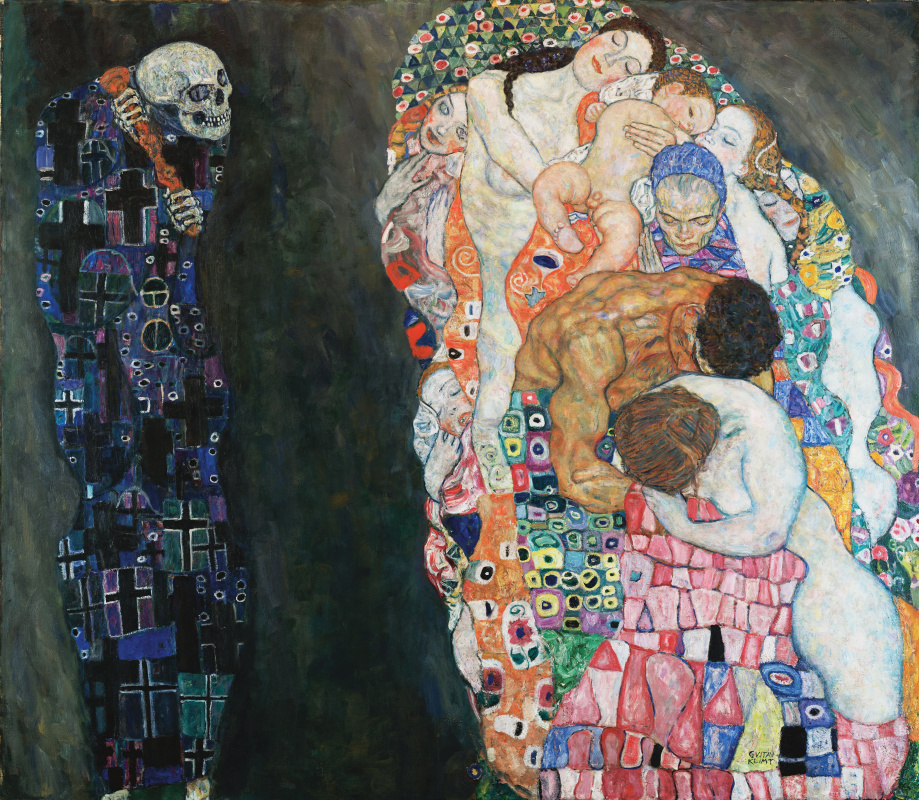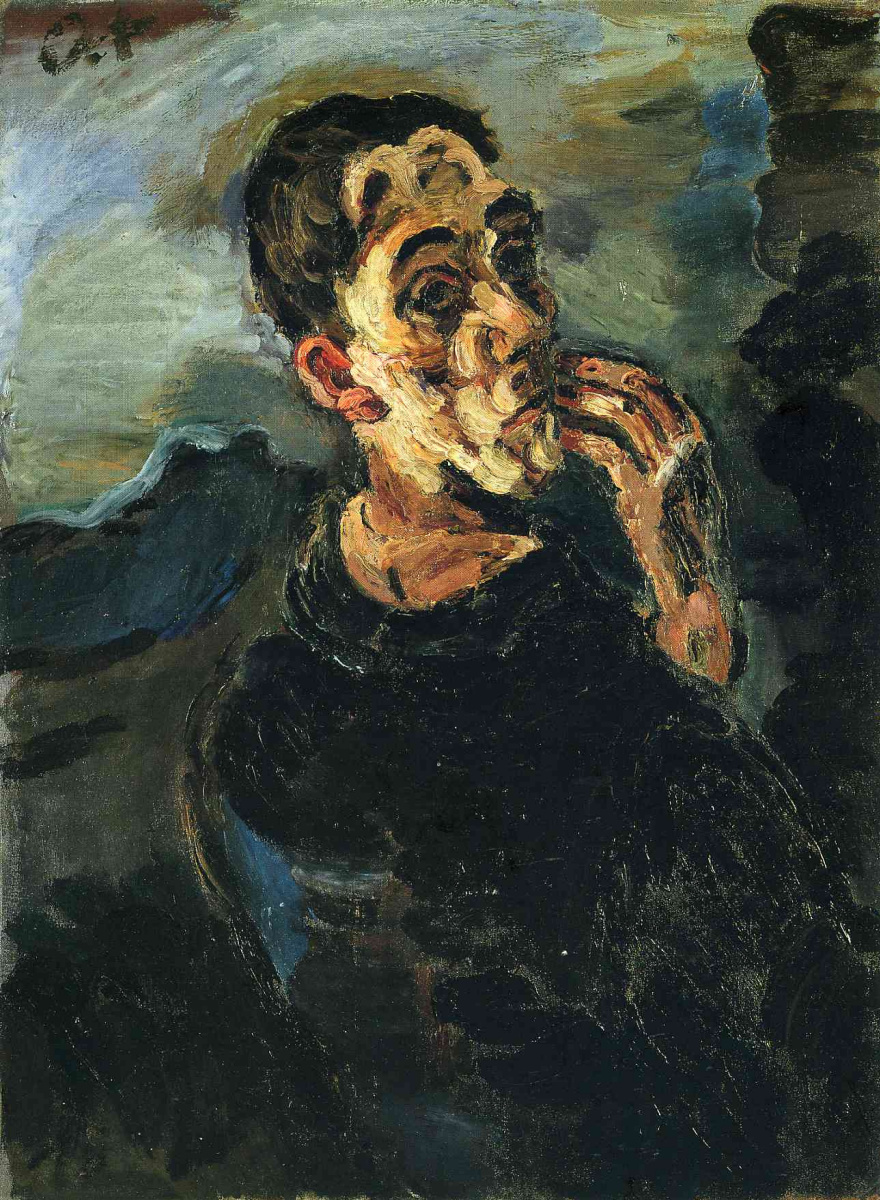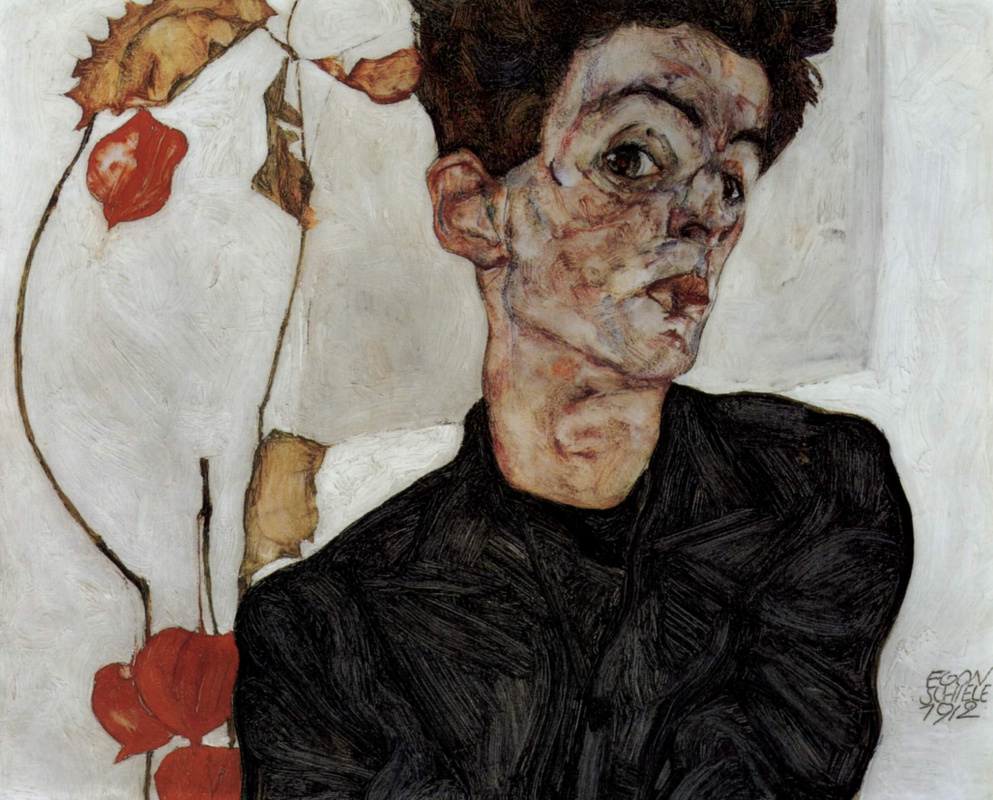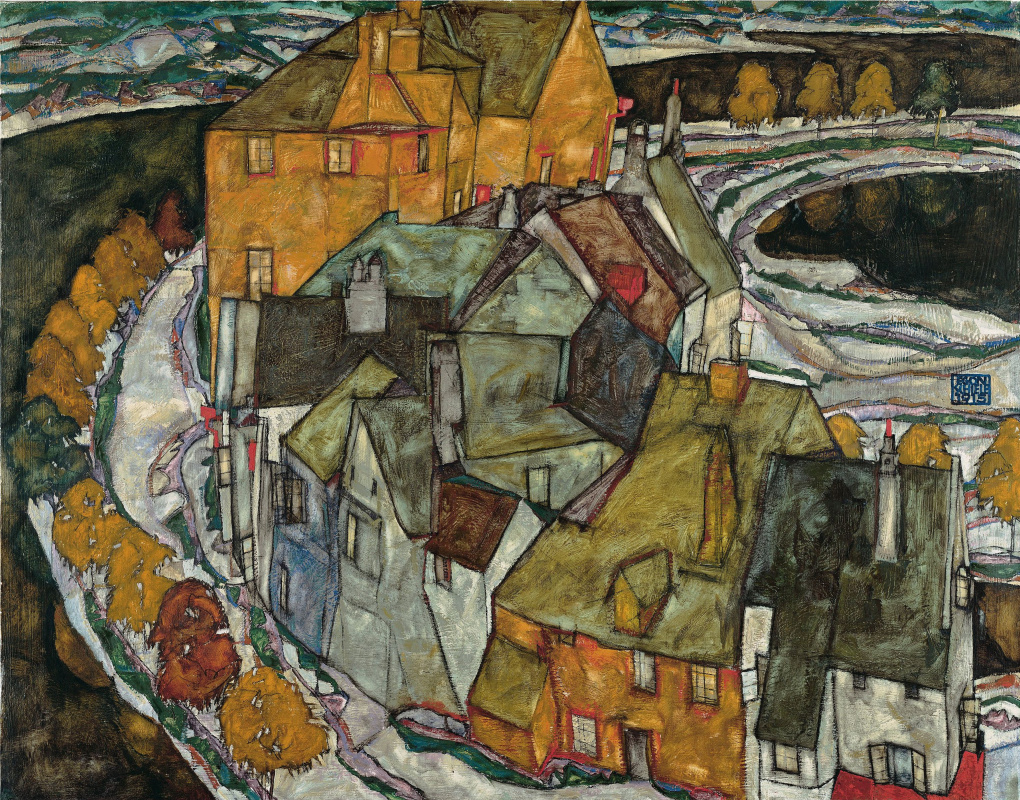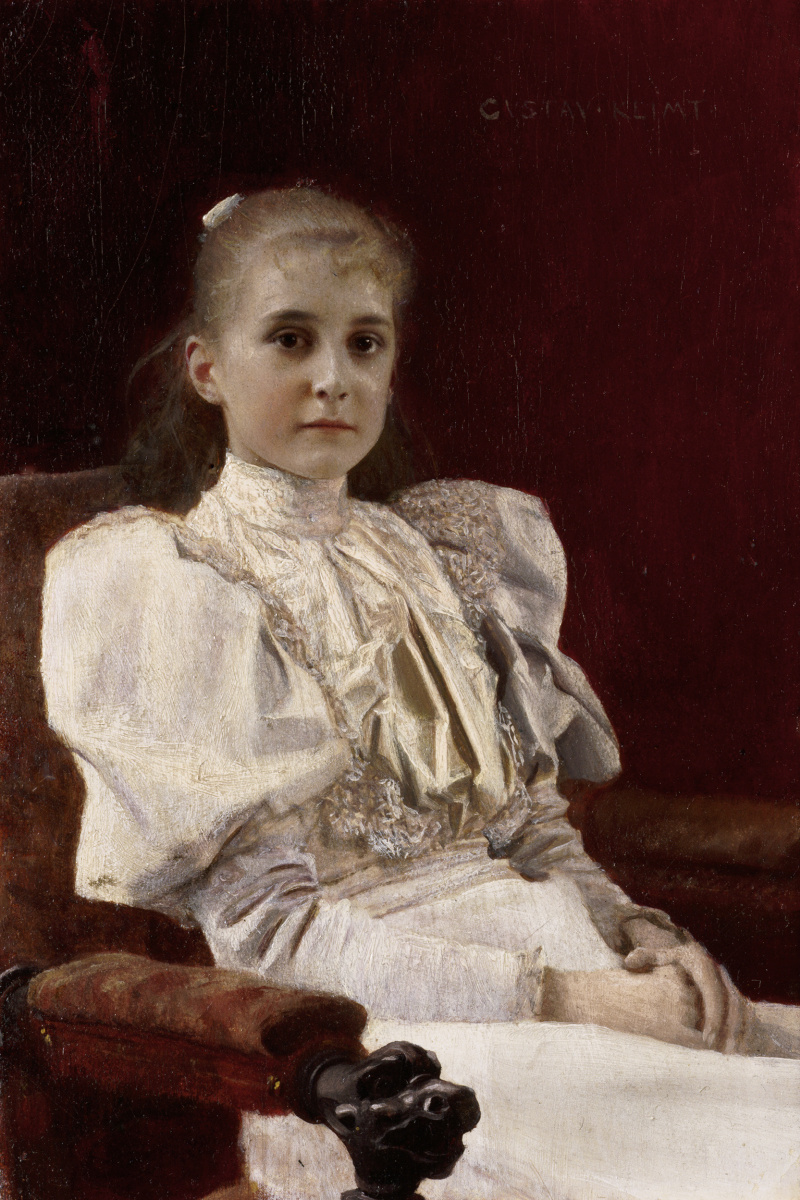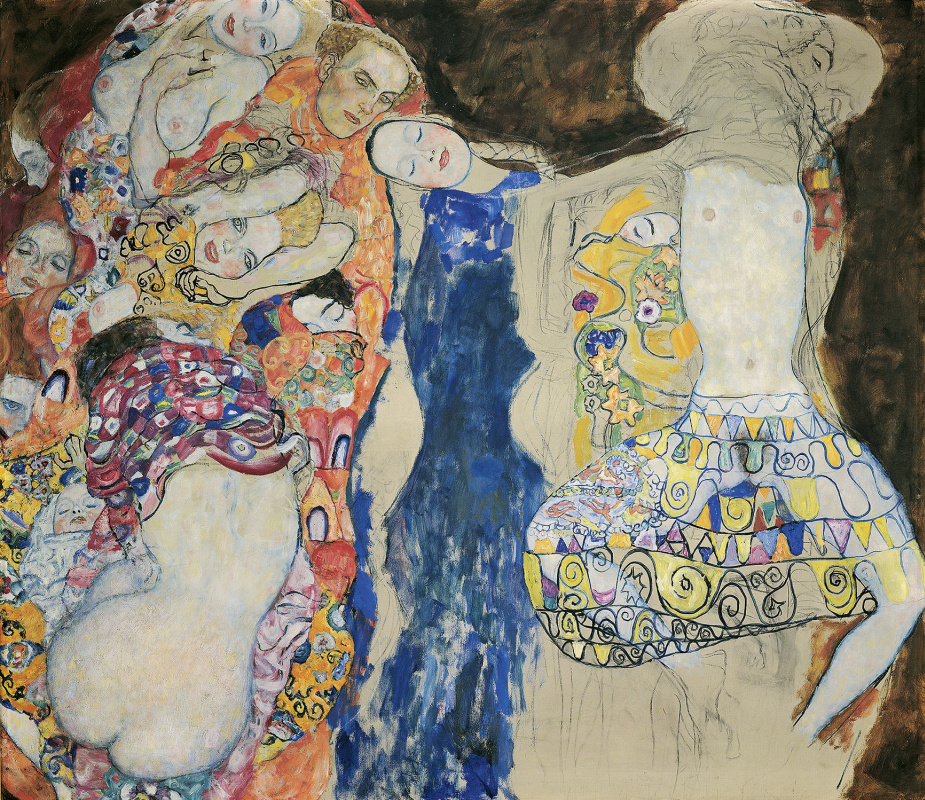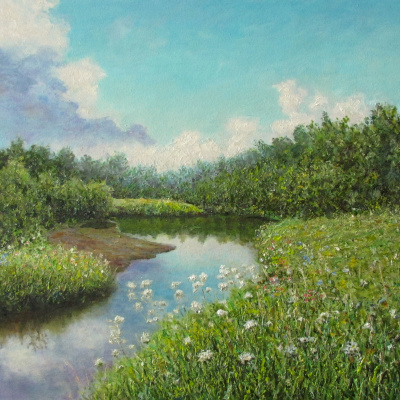2018 is the year of the Leopold Museum within frames of celebrating the anniversary year of Viennese Modernism
and its protagonists Klimt, Schiele, Wagner and Moser. The Leopold Museum reconstructs the extraordinary cultural epoch from Modernism
beginnings with Anton Romako to the Schiele jubilee exhibition, via Klimt, Moser, Gerstl, and Kokoschka. Read about the most interesting exhibitions at the Leopold Museum happening this year.

In the year of 2018 the Leopold Museum is a cornerstone in a yearlong city-wide celebration of Viennese Modernism "Beauty and the Abyss." This year Vienna praises the extraordinary cultural period with a series of special exhibitions and events devoted to its pioneers: the painters Gustav Klimt and Egon Schiele, the architect Otto Wagner and the universal artist Koloman Moser. These four protagonists all passed away in 1918 and the celebration is a mark of honor to the centenary of their deaths. All of them left an indelible mark on Vienna around 1900, and many of their works are on permanent display in the city.
The Leopold Museum is a home to the unparalleled collection of masterpieces from Viennese art around 1900. The finest examples of the turn-of-the-century Viennese craftsmanship are combined here with painting, graphic art and sculpture, providing insight into the remarkable era of Viennese Modernism . In addition to the eminent collection of works by the expressionist Egon Schiele, the Leopold Museum has also made a name for itself as the museum of Secession and Jugendstil, the Viennese Art Noveau. Hardly ever any other museum would offer such a comparable cross section of the exceptional achievements of this uniquely Viennese tradition.
The Leopold Museum is a home to the unparalleled collection of masterpieces from Viennese art around 1900. The finest examples of the turn-of-the-century Viennese craftsmanship are combined here with painting, graphic art and sculpture, providing insight into the remarkable era of Viennese Modernism . In addition to the eminent collection of works by the expressionist Egon Schiele, the Leopold Museum has also made a name for itself as the museum of Secession and Jugendstil, the Viennese Art Noveau. Hardly ever any other museum would offer such a comparable cross section of the exceptional achievements of this uniquely Viennese tradition.

A girl listening to an audio guide at the exhibition "Vienna 1900: Klimt — Moser — Gerstl — Kokoshka". Photo: Leopold Museum.
"Vienna 1900: Klimt – Moser – Gerstl – Kokoschka"
VIENNA 1900Klimt — Moser — Gerstl — Kokoschka
18.01.2018 — 10.06.2018
The exhibition is organised in an exciting series of chronologically and thematically linked galleries covering an entire floor of the Leopold Museum. The epoch is shown in a broad panorama stretching from the Secession through the arts and crafts of Art Nouveau to Expressionism. On view are works by Gustav Klimt, Kolo Moser, Josef Hoffmann, Otto Wagner, Adolf Loos, Richard Gerstl, Egon Schiele, Oskar Kokoschka and many other artists.
Text passages from Sigmund Freud and other writers popular around 1900 illuminate the fascinating epoch presented with furniture, silver, glass and jewelry together with paintings and graphics, showing what could be termed the most exciting era in the history of Viennese art.
The unconventional manner of the display opens fresh views for those well-versed in the subject and provides a compelling summary of the epoch to those new to "Vienna around 1900". While tourists gain valuable insights into the spirit of Vienna at the turn of the 20th century, the locals have an opportunity to rediscover the Leopold Collection’s holdings around 1900.
Death and Life
1915, 178×198 cm
The exhibition features major works by Gustav Klimt (1862−1918), including Death and Life (above) and the 1900 lakescape On Lake Attersee, as well as Koloman Moser’s paintings, among them Venus in the Grotto and Lovers (bellow).
The display also showcases outstanding examples of design around 1900, including furniture, artisan craftwork and posters, created as well by Koloman Moser (1868−1918), the "artist of a thousand talents" and co-founder of the Wiener Werkstätte.

View of the room Wiener Werkstätte. Photo: Manfred Thumberger
After returning back home to the Leopold Museum from the display at successful exhibitions at the Schirn Kunsthalle in Frankfurt and the Neue Galerie in New York, the radical artworks by the proto-Expressionist Richard Gerstl (1883−1908) are within "Vienna 1900" at the moment. The museum holds the most complete Gerstl collection. Visitors have chance to see his two large-scale self-portraits (bellow), the icons of Viennese Modernism
.
Oskar Kokoschka (1886−1980), called the enfant terrible of the Viennese art scene of the early 20th century, is also in the spotlight of the display with his expressive and extraordinary paintings. As the foremost in his pioneering work, visitors view the Self-Portrait, One Hand Touching the Face from 1918/19, which is both an expression of the artist’s self-questioning and doubts as well as a symbol for Austrian art embarking on a new era.
"Egon Schiele: Self-abandonment and self-assertion"
EGON SCHIELESELF-ABANDONMENT AND SELF-ASSERTION
PRESENTATION OF THE EGON SCHIELE COLLECTION
Apart from the exhibition "Vienna 1900", the Leopold Museum displays works from its own collection of Egon Schiele’s oeuvre-the largest and the most eminent collection in the world. Chosen from over 40 of his paintings and approximately 180 works on paper, the undergoing exhibition "Egon Schiele: Self-abandonment and self-assertion" illustrates career of the artist in chronological order. The show starts with the early works and traces Schiele’s development from being influenced by Gustav Klimt to his radically expressive phase, which was particularly esteemed by Rudolf Leopold, the collector and founder of the Museum, closing with the works from his "late oeuvre" created shortly before the artist’s sudden death at 28.
Self-portrait with Physalis
1912, 32.2×39.8 cm
The number of key works by Egon Schiele (1890−1918) in the Leopold Collection is astonishing: "Cardinal and Nun", "Setting Sun", "Self-Portrait with Chinese Lanterns", "Dead City", "Reclining Woman", "The Island City" and more. These works feature all important phases in the artist’s career.
Schiele’s paintings at the exhibition are juxtaposed with comprehensive biographical information, quotes and pictures as well as with some select sculptures by Wilhelm Lehmbruck, George Minne oder Ivan Meštrović to reveal fascinating parallels with the artist’s oeuvre.
Krumau. Crescent of houses II
1915, 110.5×140.5 cm
Jubilee Show of Egon Schiele's oeuvre
EGON SCHIELEThe Jubilee Show
23.02.2018 — 04.11.2018
To mark 100 years after death of Egon Schiele, the special exhibition will display his unique paintings, works on paper and archival material. Touching upon the most important themes in the artist’s oeuvre, the Museum invites viewers to comprehend Schiele’s self-confident breaking with traditions and his evolution as an expressive artist. Motivic groups including the ambivalent figure of the mother and the taboo-breaking depictions of young girls and boys touch themes of spirituality and metamorphosis. His enigmatic houses and landscapes echo with his portrait depictions, filled with tension and complex analyses.
The exhibition highlights the Expressionist years of Egon Schiele (1910−1914), with a third of the works on paper each dedicated to his self-portraits, depictions of nude girls and grown-up women. The paintings selected for the exhibition touch upon all the themes mentioned above. Works on paper will not hang for the whole period of the display but will be shown in three separate stages for conservational reasons. Along with the comprehensive museum collection, some Schiele works from international collections will feature in the jubilee exhibition as "noble guests".
Anton Romako: The Beginning of Modernism
ANTON ROMAKOThe Beginning of Modernism
06.04.2018 — 18.06.2018
Anton Romako (1832−1889) is seen today as one of those artists who opened up new painterly possibilities of interpreting the visible world in a visionary and intuitive manner. He has subtly changed conventional manners of depiction from 1875 towards a more meticulous, psychologizing interpretation. That’s why he is recognized a great pioneer of Modernism.
Considered as talentless painter at the Academy of Fine Arts Vienna (1847−49), he trained later as a history painter in Munich (1849) and subsequently in Venice, Rome and London. Romako made a name for himself over two decades as a famous portraitist and eminent genre painter in the local colony of foreigners in Rome. Following his separation from his wife, the artist returned to Vienna in 1875 and made study trips to Hungary, Italy and France. During 1882 to 1884 he alternated between Paris and Geneva.
After suicide of his two daughters in 1887, he never recovered from the shock and painted his late works in a nervous expressionist style which disturbed his contemporaries and overtaxed his generation’s understanding of art. More than a decade passed before his works were reconsidered and appreciated.
Rudolf Leopold, however, did recognize Anton Romako’s importance as one of the great pioneers of Modernism very early on, and the Leopold Museum as well as the Leopold Private Collection holds one of the most comprehensive collections of works by the artist today, including masterpieces such as the two portraits of the Reisser Family, the Countess Kuefstein, Odysseus and Circe as well as Girl, Crossing a Mountain Torrent.
The retrospective shown at the Leopold Museum will showcase outstanding works from the oeuvre of this unusual painter.
Rudolf Leopold, however, did recognize Anton Romako’s importance as one of the great pioneers of Modernism very early on, and the Leopold Museum as well as the Leopold Private Collection holds one of the most comprehensive collections of works by the artist today, including masterpieces such as the two portraits of the Reisser Family, the Countess Kuefstein, Odysseus and Circe as well as Girl, Crossing a Mountain Torrent.
The retrospective shown at the Leopold Museum will showcase outstanding works from the oeuvre of this unusual painter.
Gustav Klimt
GUSTAV KLIMT22.06.2018 — 04.11.2018
To mark the 100th anniversary of the death of Gustav Klimt and to honor him as the protagonist of Viennese Modernism par excellence, the Leopold Museum will mount up a wide retrospection of his oeuvre in the mid-summer of 2018. The exhibition retraces Klimt’s artistic evolution from an exponent of late Historicism towards one of the most eminent representatives of Viennese Jugendstil.
Sitting girl
1894, 140×95 cm
Gustav Klimt saw the Secession as a venue for the fight for spiritual and artistic modern art. Spirit and matter, nature and art, as well as Eros and Thanatos constituted the program of his artistic oeuvre. Besides works from the holdings of the Leopold Museum and the Leopold family’s private collection, the display will feature exhibits from the Klimt Foundation, works given to the museum as a permanent loan by a Klimt descendant as well as select international loans from private and institutional collections.
The Bride (unfinished)
1918, 165×191 cm
One of the highlights at the show will be a room devoted to Klimt’s Symbolist painting The Bride. The unfinished work of the artist and his last masterpiece was made from numerous drawings and studies, ranging stylistically between Jugendstil and Expressionism
.
The large-scale canvas depicting a group of figures will be shown for the first time in the context of pertinent work drawings and the artist’s only extant sketchbook from 1917. This authentic document on loan from the Klimt Foundation not only contains pencil sketches for lost Klimt paintings but illustrates in a unique manner the work process behind his unfinished painting The Bride.
The large-scale canvas depicting a group of figures will be shown for the first time in the context of pertinent work drawings and the artist’s only extant sketchbook from 1917. This authentic document on loan from the Klimt Foundation not only contains pencil sketches for lost Klimt paintings but illustrates in a unique manner the work process behind his unfinished painting The Bride.
Read about exhibitions organized by other museums and galleries in Vienna to celebrate Viennese Modernism
this year in our article Vienna 2018: insight into Viennese Modernism and Art Nouveau.
Written on material of the Leopold Museum, museumsinvienna.org, wien.info. Title illustration: view of the room at the Leopold Museum. Photo: Billt!






